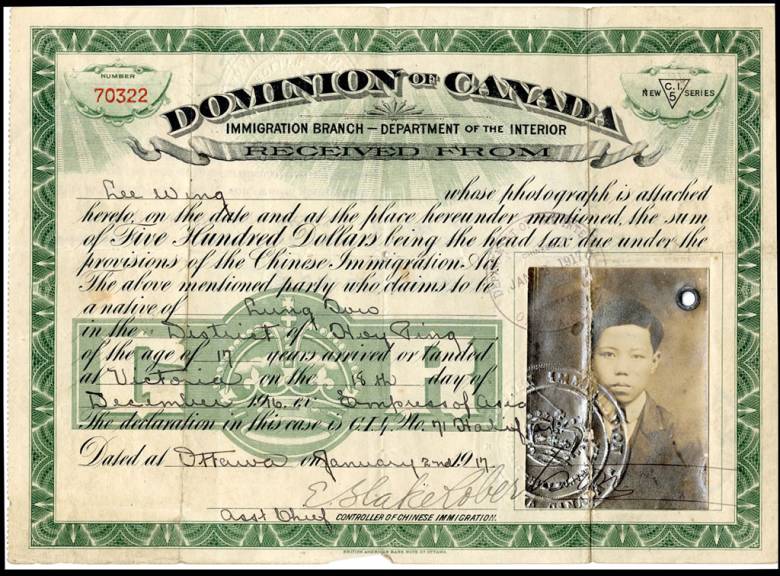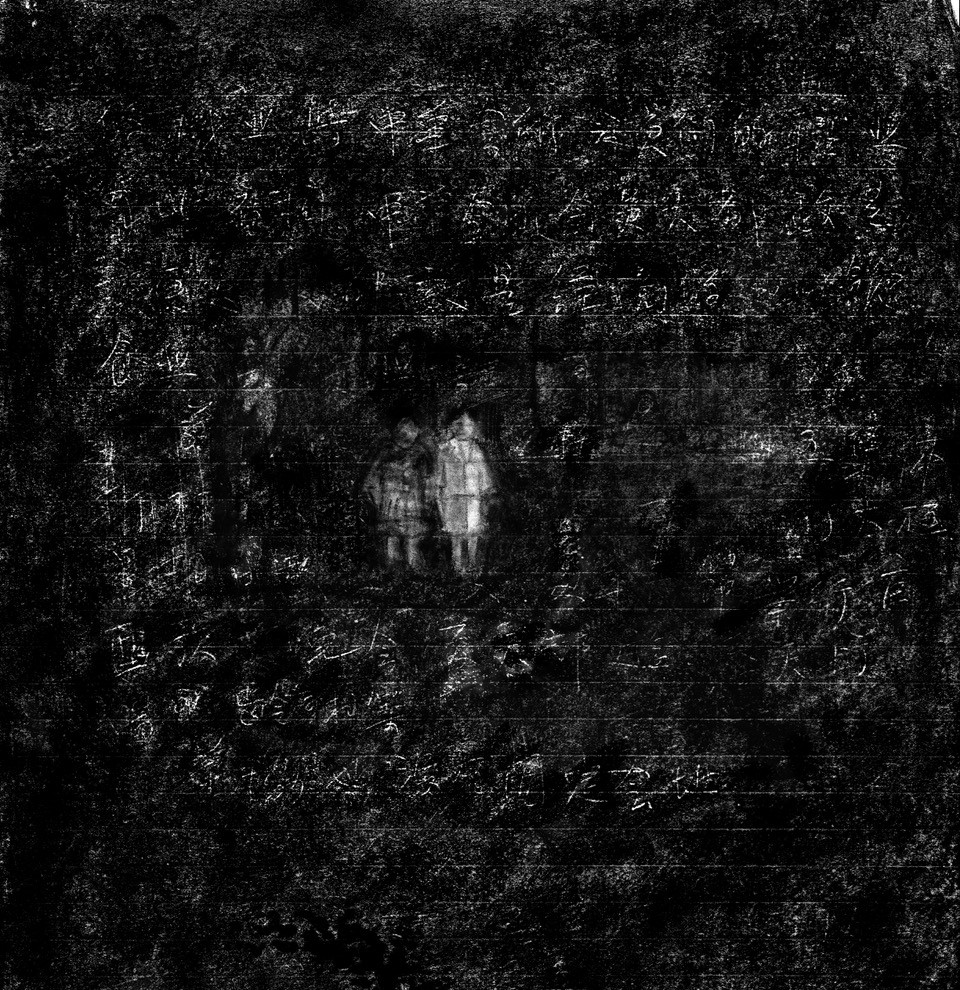
Banner Image: Chinese Head Tax Certificate issued to Lee Wong, 1916. Canadian Museum of Immigration at Pier 21 collection, R2021.48.6
Artwork, historical objects and documents reflect artist JJ Lee’s Chinese Maritime family’s immigration experience in this new temporary exhibition. The mixed media installation tells the remarkable story of her family’s multi-generational emigration from China, between 1916 and 1957.
Artist JJ Lee thought of herself as a second-generation Canadian, her parents having been born in China. A discovery in her childhood home set in motion a series of discoveries that revealed her family’s history in this country goes back a lot farther than she thought. It also inspired an artistic installation, on exhibit at the Museum May 12- July 23, 2023.
“Years and years and years ago I had a dream -it was very vivid- that I went up to the attic, and I found these drawings on brown paper that was a little bit stripey. Apparently, I had done them. And I’m like ‘I don’t remember doing these. That’s weird!’”
A homecoming to help move house
In 2020, with life disrupted by the pandemic, Lee (who lives in Toronto) was back in Halifax where she’d grown up. Her aging parents were moving to a retirement residence, and for two months she lived in the house she’d grown up in, faced with the daunting task of going through the house and deciding what to keep and what to throw away. She was able to teach her courses at the Ontario College of Art and Design remotely. Her husband, a kindergarten teacher, was teaching online too; their child was learning remotely.
Discoveries in the attic
A house accumulates a lot of things in a lifetime, as Lee discovered. She became very interested in the many papers- and the things made from paper-in the house. Paper is a Chinese invention with a deep history. But paper is also a conveyer. It can carry instructions, records, monetary value, laws, and memories. She found engineering diagrams her father had drawn as a student. Old receipts from her grandfather’s laundry in Halifax’s south end. A 1921 Chinese-English Dictionary.
Perhaps most significantly she found a 1916 certificate issued by the Immigration Branch of the Dominion of Canada. It featured the picture of a 17-year-old boy.
“I was like ‘Dad who’s this?’ And he said, ‘That’s my father’.”
Beginning in 1885, the Canadian government began charging a duty to each Chinese immigrant arriving in Canada: the Head Tax. Starting at $50, the tax was increased to $500 by 1903. The restrictions escalated again after the First World War when the Chinese Immigration Act, 1923 almost completely prohibited Chinese immigration. From 1923 until 1947, when the racist exclusionary policy was repealed, only a handful of Chinese immigrants were able to enter Canada.
“Growing up I didn’t even know about the Head Tax,” she says.
She has asked her father why he never told the family about its history. His reply: “I didn’t think anyone would be interested.”

Ah Ning and Saum Po Charcoal on writing paper, 9 x 9”, 2022. JJ Lee, courtesy of the artist.